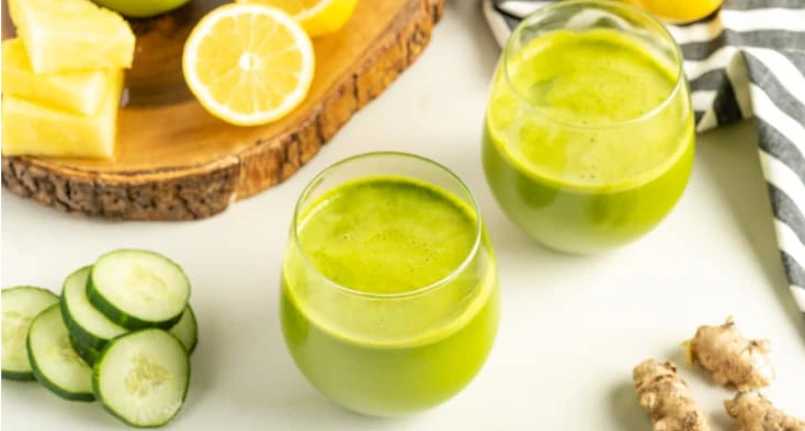Introduction
Tofu and tempeh are sources of vegetable protein increasingly consumed by people who follow a vegan , vegetarian , but also omnivorous diet . While both of these soy foods offer similar health benefits , they differ in appearance, flavor, and nutrient profiles .
Tempeh and Tofu: what are they?
Tempeh and tofu are both processed soy products .
Tofu , which is more popular, is made from coagulated soy milk pressed into white, firm-textured blocks . Commercially, often being associated with plant- based cheese (although that term can no longer be used to refer to the dairy product), it is available in a variety of textures , including firm, soft, and creamy. Tempeh , on the other hand, is obtained from fermented and compacted soybeans in a firm but dense block inside. Some varieties also contain quinoa ,
brown rice , flaxseed and spices.
Tempeh is chewy and has a nutty , earthy flavor, while tofu is more neutral and tends to absorb the flavors of the foods it’s cooked with. Both products are commonly used as nutritious meat substitutes and can be cooked in a variety of ways.
How to use them in the kitchen
Tofu and tempeh are now widely available in most grocery stores, including supermarkets.
Tofu can be found canned, frozen or in vacuum packs in the refrigerated counter. It is usually sold in blocks, which must be rinsed and squeezed before consumption. The blocks are often cut into cubes and added to dishes such as vegetable side dishes, timbales, salads , but they can also be baked together with potatoes or stewed with spices.
Tempeh is just as versatile . It can be steamed , baked, or stir-fried and added to a favorite lunch or dinner dish, including sandwiches , soups, and salads. Given tempeh’s nutty flavor , some people prefer it as a meat substitute over tofu, which has a milder flavor.
Regardless, both are simple to prepare and easy to add to a balanced diet.
Nutritional profile of Tempeh and Tofu
While their nutrient content is similar, there are some key differences. Because tempeh is usually made with nuts , seeds, legumes , or whole grains , it is significantly higher in calories, protein, and fiber . In fact, one serving (85 grams) provides 7 grams of fiber, which is 28% of your daily requirement. Although tofu is low in protein , it has fewer calories and still offers significant amounts of iron and potassium, while boasting more than double the calcium.found in tempeh. Both soy products are generally low in sodium and cholesterol -free .
| Tempeh | tofu | |
| Calories | 140 | 80 |
| Protein | 16 grams | 8 grams |
| Carbohydrates | 10 grams | 2 grams |
| Fiber | 7 grams | 2 grams |
| Fat | 5 grams | 5 grams |
| Soccer | 6% of Daily Value (DV) | 15% of the DV |
| Iron | 10% of the DV | 8% of the DV |
| Potassium | 8% of the DV | 4% of the DV |
| Sodium | 10 mg | 10 mg |
| Cholesterol | 0 mg | 0 mg |
Tempeh and Tofu: health benefits
In addition to their common nutritional characteristics, tofu and tempeh provide similar health benefits. Tempeh and tofu are high in phytoestrogens known as isoflavones . Isoflavones are plant compounds that mimic the chemical structure and effects of estrogen , a hormone that promotes sexual and reproductive development. Many of the health benefits of tofu and tempeh, which include a reduced risk of some cancers and improved heart health, have been attributed to their isoflavone content. Tofu offers about 17-21 mg of isoflavones per serving (85 grams), while tempeh provides 10-38 mg in the same amount, depending on the soybeans used to prepare it.
Research associates increased soy intake with a reduced risk of heart disease due to its effects on cholesterol and triglycerides . In particular, nutrient- enriched tempeh is effective in reducing triglyceride and cholesterol levels . Additionally, one study of 45 men observed that total cholesterol and triglyceride levels were significantly lower with a diet high in tofu compared with a diet high in lean meat .
Tempeh and Tofu: nutritional differences
A stark difference between tofu and tempeh is that tempeh provides high amounts of prebiotics that are beneficial to the body. Prebiotics are natural, indigestible fibers that promote the growth of healthy bacteria in the digestive tract . They involve regular bowel movements, reduced inflammation, lower cholesterol levels and even better memory. Tempeh is particularly rich in these beneficial prebiotics due to its high fiber content, and it stimulates the growth of Bifidobacterium , a type of beneficial intestinal bacteria.




